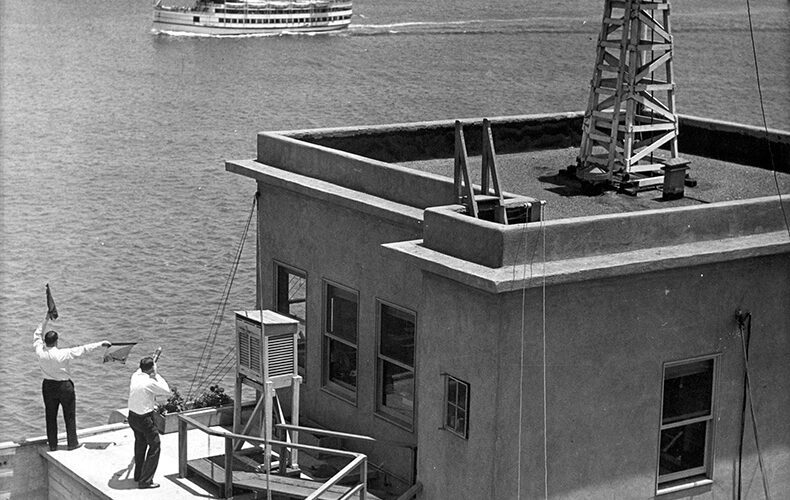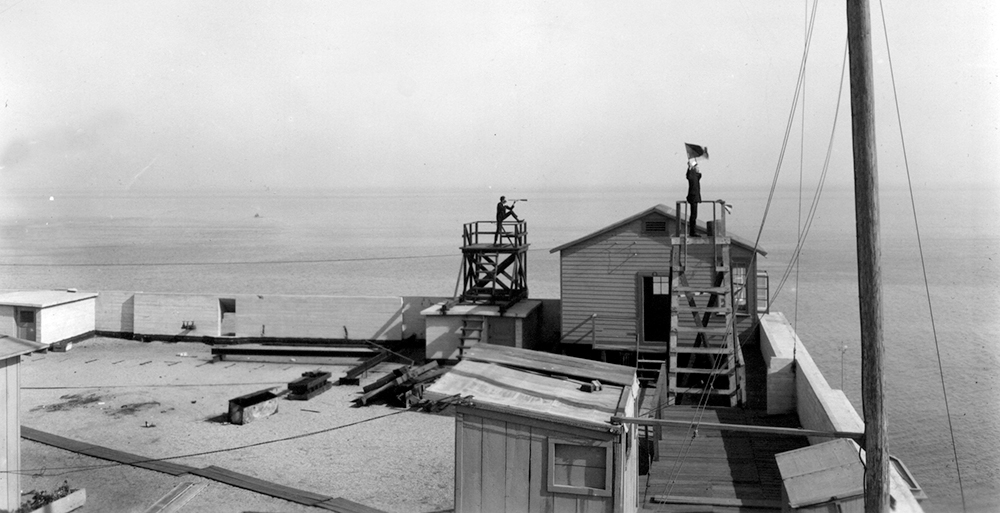
Back in 1923, when entrepreneur W.H. Wickersham first hired professional lookouts to monitor vessel movement throughout the Los Angeles and Long Beach ports in the outer harbor, he probably had no idea how indispensable to vessel traffic monitoring that his Marine Exchange and Sailing Club of the Port of Los Angeles would eventually become.
But 100 years later, the exchange, now known as the Marine Exchange of Southern California (MX SoCal), has evolved over the decades to play a fundamental—and highly crucial—role in the world of maritime traffic.
“We’ve adopted as our tagline ‘Providing Maritime Peace of Mind Since 1923’,” External Affairs Manager Steve Chesser said. “They know that they can depend on the information we put out and they understand as a consumer how important that information is to their safe and efficient operation.”
Founded in 1923, the Marine Exchange has been around since the days when the ports of Los Angeles and Long Beach were much, much smaller and far less bustling than they are today. One of the things that makes the SoCal marine exchange unique is its Vessel Traffic Service, or VTS.
There are other, smaller-scale vessel tracking services around the United States, but the VTS of Los Angeles-Long Beach is a one-of-a-kind government and private sector joint-venture partnership. The facility, which provides vessel operators with information about other marine traffic, as well as vessel safety advice and recommendations, is jointly operated by the Marine Exchange and the U.S. Coast Guard.
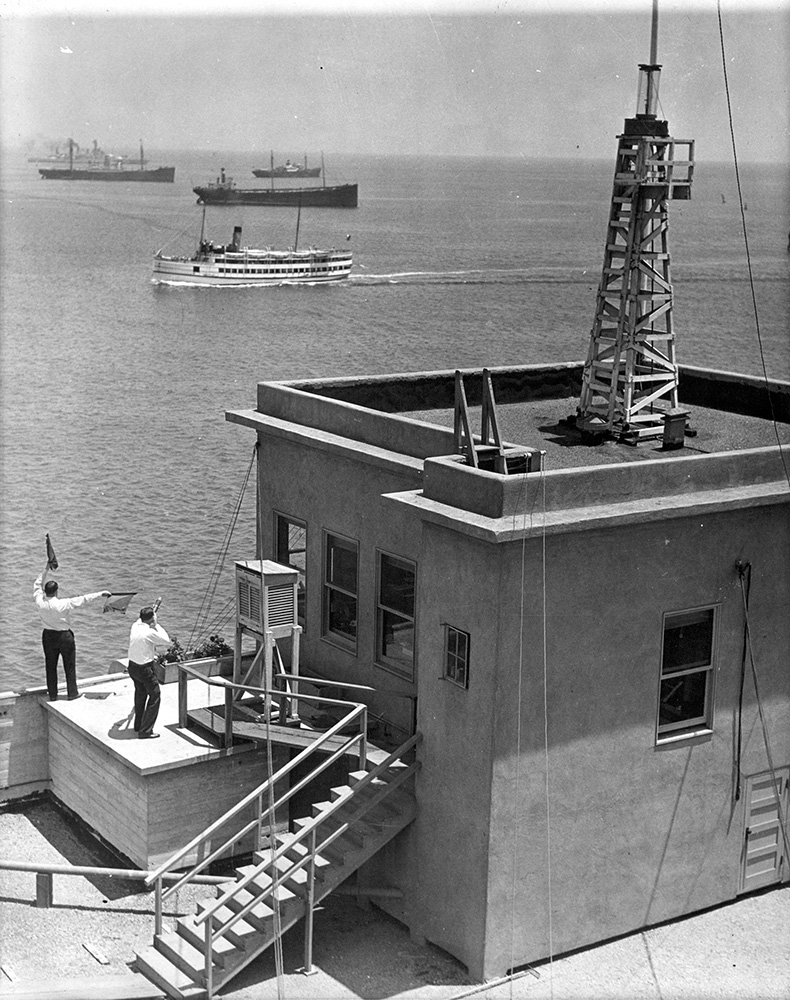
Commercial ships and other designated vessels are mandated by law to use the VTS.
The LA-Long Beach VTS was established on March 1, 1994, to meet federal and state vessel safety regulations that were enacted in the wake of the Exxon Valdez oil tanker running aground in Alaska in 1989. At the time the ship, which was on its way to Long Beach, was carrying about 55 million gallons of oil. Between 10 and 11 million gallons of it spilled into Prince William Sound; it was one of the worst man-made environmental disasters of the 20th Century.
The mishap eventually led to the U.S. government deciding to place Coast Guard-run Vessel Traffic Systems around the country, manned by a combination of active duty and civil service members. However, at the time, the Coast Guard didn’t think the LA-Long Beach port complex was large enough to warrant its own VTS. California disagreed, and began working on setting a VTS up.
From 1989 to 1994, the Exchange managed to get federal Captain of the Port authority by having active duty Coast Guard members assigned to the facility. The presence and participation of the military personnel at the VTS provides authority to enforce federal navigation and safety regulations as well as to enforce port security and homeland defense procedures and policies.
And to this day, the Marine Exchange of Southern California operates its system as an agent of the State of California and in partnership with the Coast Guard. Additionally, the VTS advises and coordinates commercial vessel traffic operating within an Area of Responsibility (AOR), which includes all waters outside the federal breakwaters—San Pedro Bay, Santa Monica Bay, Newport Bay and Santa Catalina Island—extending 25 nautical miles from where the Exchange sits on Point Fermin in the San Pedro area of Los Angeles.
Prior to the VTS, the Marine Exchange was basically a private company that just kept statistics of the ships coming and going inside the ports, but with its public-private partnership, it became more integral in ship navigation, safety and security, according to Capt. Kip Louttit, a retired high-ranking Coast Guard officer who was hired to run the Marine Exchange in 2013.
“The public-private partnership means that we work with the agents every day getting the schedule to come in and then we work with the Coast Guard for their security piece and then we lash those up, so the ships can come in and out as much as possible exactly when they want to,” he explained. “We’ve got an ability to keep the synchronicity going between the ships and the shore.”
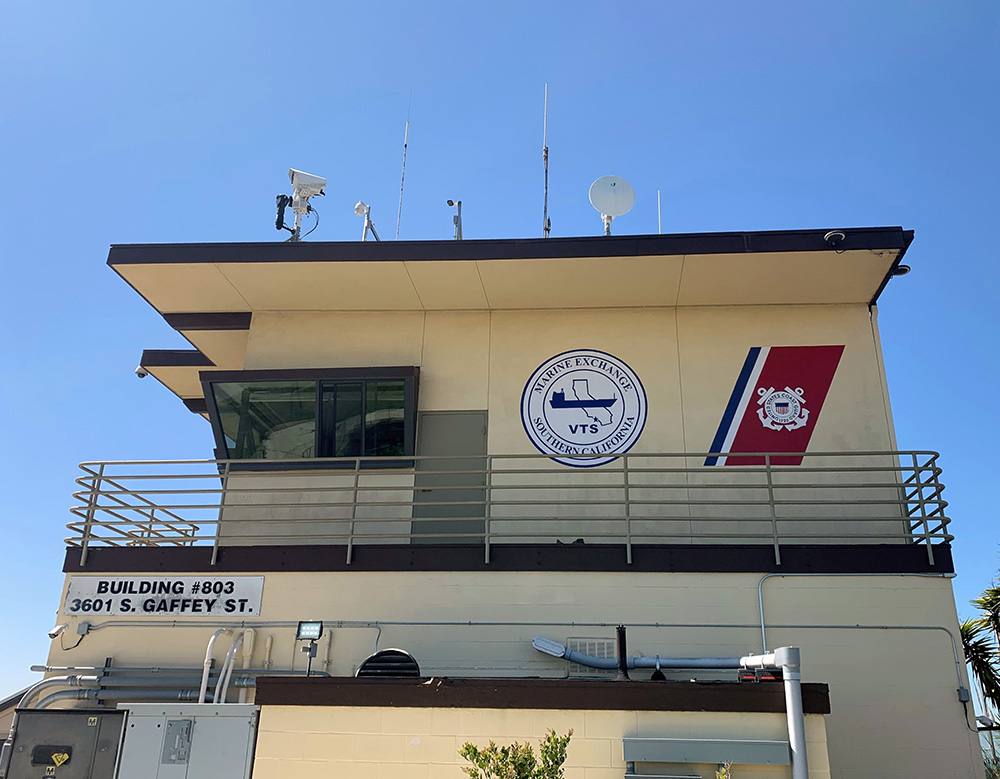
Although the Exchange utilizes the services of Coast Guardsmen to monitor vessel traffic, much of the administrative work regarding the vessels is performed by a team of civilian information specialists.
“There are Marine Exchanges around the country at all the major ports, but they predominantly do what (our civilian) Marine Information Specialists do, which is all the ship arrival/departure kind of information,” Louttit explained. “The other dozen VTSs are completely run by the Coast Guard with a combination of active duty or civil service members.”
At the Marine Exchange of Southern California however, the Marine Information Specialists input data on the ship arrival and departure information, but also do much more, including staying in contact with the agents for the vessels that are going to come into not just LA-Long Beach, but also El Segundo, Port Hueneme and San Diego.
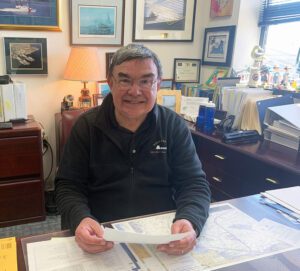
They look for where the vessel’s coming from, where it goes when it leaves the port, what berth it’s going to while in port, the activity while it’s in port, the cargo, their ETA and the ETD. All the information is entered into a database, and some agents send over a vessel schedule daily. The Exchange also receives a notice of arrival report each morning from the Coast Guard.
Information is sent out to paying customers electronically each day. Information’s also posted on the Exchange’s website, mxsocal.org, where it’s updated every 10 minutes.
The VTS is a nonprofit entity, is fully funded without taxpayer money and remains financially self-sufficient through VTS user fees—which are mandated by state law and required by port tariff—to cover the costs of ongoing operating expenses.
User fees also originally paid for six uniformed US Coast Guard personnel assigned to the VTS as vessel traffic specialists and who stand watch alongside the Exchange’s civilian staffers. However, in 1999, the Coast Guard agreed to absorb the cost for providing the VTS the billets.
Currently, the VTS monitors and facilitates about 27,000 vessel transits each year on deep sea commercial ships and local vessels passing through the AOR, according to Exchange data, which is something that the Exchange founder Wickersham probably never could have dreamed would occur during the service’s humble beginnings.

